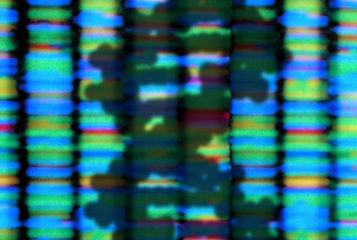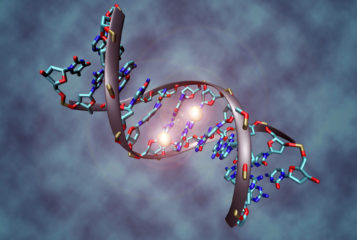|
Epigenetics: Linking Genotype and Phenotype in Development and Evolution Edited by Professor Benedikt HallgrÃmsson and Professor Brian Hall Published by University of California Press ISBN-10: 0520267095, ISBN-13: 978-0520267091 Buy this book from Amazon UK |
Epigenetics has become something of a hot topic in recent years. Not just among molecular biologists such as myself, but also in the wider scientific community and popular media.
Nowadays, the term epigenetics is used to describe processes that occur 'literally on top of the DNA', but originally the word had a much broader use.
This is the starting point for the book 'Epigenetics: Linking Genotype and Phenotype in Development and Evolution', edited by Professors Benedikt HallgrÃmsson and Brian Hall. It brings together a range of experts to consider the different approaches used to study epigenetic phenomena.
Professors HallgrÃmsson and Hall begin by defining epigenetics as 'the properties of the pathways and processes that link the genotype and phenotype'. This seemed like quite a broad interpretation, so I was surprised to learn that it is consistent with the original use of the word by Conrad Waddington, who coined the term 'epigenotype' in the 1950s.
To illustrate the scope and diversity of epigenetic processes, the editors give two examples. The first is that, during development, interactions between two different cell populations can lead to the formation of a third kind of cell; the second is that the interaction between muscle activity and bone can determine that bone's shape.
Such examples fall outside the typical domain of contemporary epigenetics research, which focuses on molecular signals controlling the expression of a gene, such as DNA methylation and chromatin modifications.
The book provides an unusually wide breadth of perspectives on epigenetics, each part being written by a different author, discussed in terms of their personal area of research.
The introduction of the term and its concept in the first part provides the historical and philosophical foundations for the book. This is then followed by a discussion of the various ways epigenetics has been studied in the academic fields of development and evolution, with case studies of epigenetic processes in vertebrate organ development making up the third section. The final part of the book takes a close look at the role of epigenetics in evolution and disease.
The technical language and highly specialised content in the individual chapters requires a firm grounding in biology, which could overwhelm lay readers.
Overall, though, the book achieves the editors' principal aims of reminding a new generation of molecular and systems biologists about the historical roots and scope of epigenetics.
As such, the book is likely to be of interest to a wide range of academics and graduate students in the biological sciences, and not just those specialising in molecular epigenetics.
Buy Epigenetics: Linking Genotype and Phenotype in Development and Evolution from Amazon UK.






Leave a Reply
You must be logged in to post a comment.